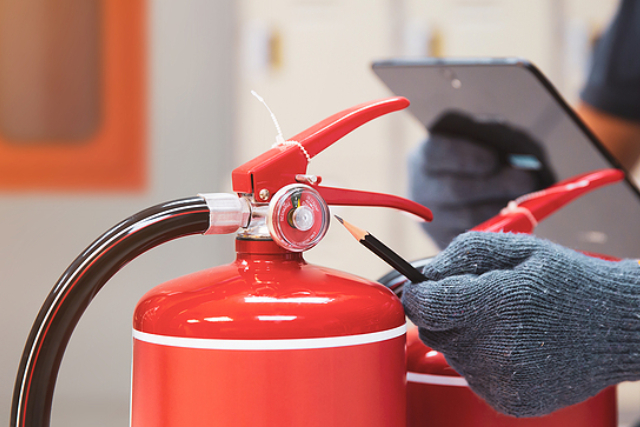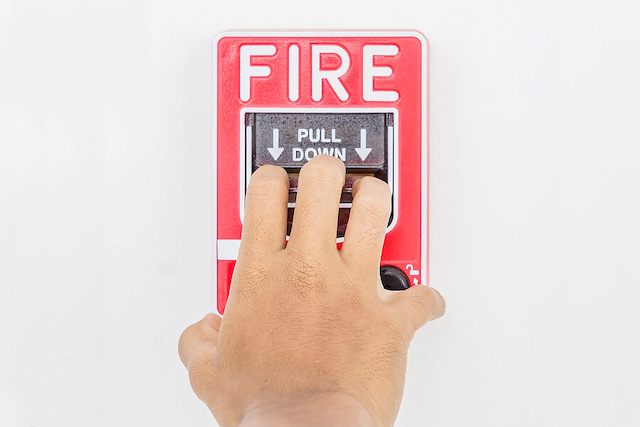Fire hazards are all around us, and it is best to never assume that any place is fireproof. As such, having a fire safety plan is essential, which includes having fire extinguishers at hand. These devices come in various sizes and types to combat different fire classes and prevent their spread. Of course, just like any other tool, fire extinguishers must be used properly and maintained according to their manufacturer’s instructions to achieve optimal performance. Knowing whether to fully replace or simply recharge fire extinguishers is vital to ensuring their usefulness and effectiveness.
Understanding Fire Extinguishers
As mentioned, fire extinguishers come in different types. Understanding these different types and choosing those most suitable for a particular building’s environment and location is crucial to a fire management plan. This variety exists because different chemicals are more effective against different kinds of fuel that feeds the fire. For instance, commercial kitchens where flammable liquids are used for cooking, like greases and cooking oils, warrant a Type K fire extinguisher nearby. Understanding which types of fire extinguishers are present in a building and knowing their components are the first steps in deciding whether to replace or recharge these fire suppression tools.
When to Replace Fire Extinguishers
Fire extinguishers are not made to last forever and have their own lifespan. In general, this lifespan reaches between six to twelve years; each container will have a unique mark specifying when it should be replaced. This information is usually on the extinguisher’s body or identification tag.
Apart from age, fire extinguishers must be replaced if there is evident damage to them. Examples of damage to keep an eye out for include issues with the handle, such as a missing pin or loose handle, visible corrosion, and cracks or holes on the hose. If any of these are present on a fire extinguisher, they should be replaced immediately since they could render the tool ineffective during a fire emergency.
Lastly, a fire extinguisher must be replaced if its identification tag is missing, regardless if it is still in pristine condition. This is because fire extinguishers need a periodic inspection to ensure their effectiveness. Its identification tag is essentially a service tag that inspectors use to learn about its history, including its maintenance record and any issues it may have had in the past.
When to Recharge Fire Extinguishers
It is essential to know that the chemical contents of fire extinguishers lose their effectiveness over time. Hence, knowing which type of fire extinguishers are deployed and the chemicals they hold will determine how long they can remain effective at doing their job. Once their optimal effectiveness time passes, it is highly recommended to recharge fire extinguishers to ensure they can continue to perform during a fire emergency.
After experiencing a fire incident wherein the fire extinguishers were put to use, FSM managers or the building owner should immediately schedule an appointment to recharge the used extinguishers. This is especially important if there is only one fire extinguisher on the premises since neglecting to do so puts everyone at risk should another fire outbreak occur.
The importance of recharging is because the chemical content is pressurized inside the fire extinguisher, and the release of pressure drastically reduces its effectiveness. To make sure that a fire extinguisher will work optimally when it is most needed, it is vital that the fire extinguishing chemicals inside are under the right amount of pressure. As such, when a fire extinguisher is put to use, and there is a release of pressure, it must be immediately recharged to continue performing as expected.
Conclusion
Although maintaining fire extinguishing systems and tools like fire extinguishers may seem like a hassle, it is important to remember that they could mean all the difference when a fire outbreak occurs. Therefore, proper maintenance of all aspects of a fire suppression system—including its fire extinguishers—is essential to protecting lives and property from the threat of fire.
Here at TenLearn, we help fire safety managers keen on upgrading their skills by providing fire safety courses in Singapore. We are an online platform that hosts SCDF-approved (CPD Programme) courses that award you with CDP points upon completion and provide you with the skills and competencies you need to remain relevant and competitive. Thanks to our online learning platform, you can access your FSM course in Singapore, anywhere and at any time, all at your own convenience.


Write a public review